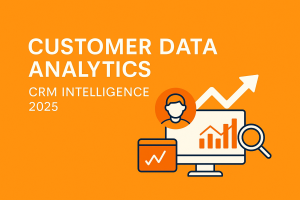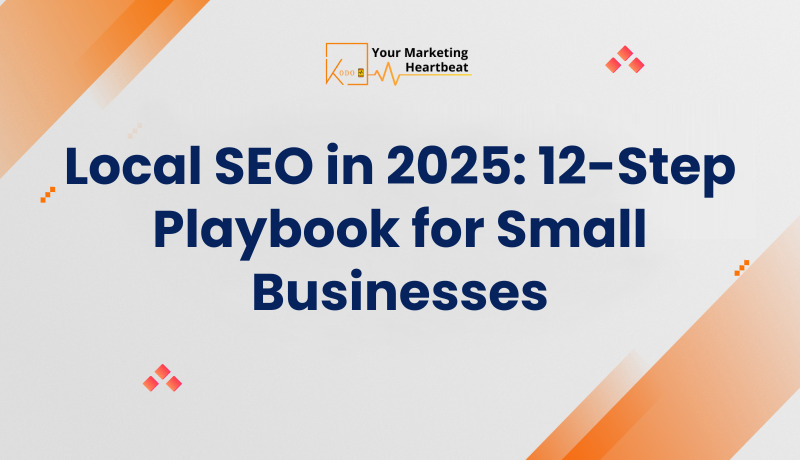Customer Data Analytics: 2025 CRM Intelligence for Predictive Growth
In the rapidly evolving landscape of customer relationship management (CRM), the integration of advanced analytics and artificial intelligence (AI) is set to redefine how businesses engage with their customers. As we approach 2025, the focus on customer data analytics will become increasingly critical for organizations aiming to enhance customer lifetime value modeling, predict churn, and leverage behavioral analytics for strategic growth. This article delves into the transformative trends shaping CRM intelligence and offers actionable insights for businesses looking to thrive in this new era.

The Shift Towards Predictive Analytics
Predictive analytics is no longer a luxury; it has become a necessity for businesses seeking to understand and anticipate customer behavior. By harnessing vast amounts of data, organizations can create models that forecast customer actions, preferences, and potential churn. This shift allows businesses to tailor their marketing strategies and improve customer retention.
Understanding Customer Lifetime Value Modeling
Customer lifetime value (CLV) modeling is a crucial component of predictive analytics. It helps businesses estimate the total revenue a customer is expected to generate throughout their relationship with the company. By accurately calculating CLV, organizations can prioritize high-value customers and allocate resources effectively.
- Data-Driven Insights: Companies can analyze historical data to identify patterns and trends that influence customer behavior.
- Segmentation: By segmenting customers based on their predicted lifetime value, businesses can tailor their marketing efforts to specific groups, enhancing engagement and loyalty.
- Resource Allocation: Understanding CLV enables organizations to invest in customer acquisition and retention strategies that yield the highest returns.
Churn Prediction: A Proactive Approach
Churn prediction is another vital aspect of CRM intelligence. By identifying customers at risk of leaving, businesses can implement targeted retention strategies to keep them engaged.
- Behavioral Analytics: Analyzing customer interactions and behaviors can reveal warning signs of potential churn, such as decreased engagement or negative feedback.
- Intervention Strategies: Once at-risk customers are identified, businesses can proactively reach out with personalized offers or support to address their concerns.
- Continuous Monitoring: Implementing a system for ongoing churn analysis allows organizations to adapt their strategies in real-time, ensuring they remain responsive to customer needs.
The Role of AI in CRM
Artificial intelligence is revolutionizing CRM by automating processes, enhancing customer interactions, and providing deeper insights into customer behavior. As we move towards 2025, AI’s role in CRM will only expand.
Automation of Routine Tasks
AI can automate repetitive tasks, freeing up valuable time for sales and customer service teams. This automation leads to increased efficiency and allows employees to focus on high-value activities.
- Lead Scoring: AI algorithms can analyze customer data to prioritize leads based on their likelihood to convert, enabling sales teams to focus their efforts effectively.
- Customer Support: AI-powered chatbots can handle routine inquiries, providing instant responses and improving customer satisfaction.
- Reporting and Analytics: Automated reporting tools can generate insights from customer data, allowing businesses to make informed decisions quickly.
Enhanced Personalization
AI enables businesses to deliver personalized experiences at scale. By analyzing customer data, organizations can tailor their communications and offerings to meet individual preferences.
- Dynamic Content: AI can help create personalized marketing content that resonates with specific customer segments, increasing engagement rates.
- Recommendation Engines: By analyzing past purchases and browsing behavior, AI can suggest relevant products or services, enhancing the customer experience.
- Predictive Customer Journeys: AI can map out potential customer journeys, allowing businesses to anticipate needs and provide timely support.
Integrating Behavioral Analytics
Behavioral analytics is a powerful tool for understanding customer interactions and preferences. By analyzing how customers engage with products and services, businesses can gain valuable insights that inform their strategies.
Tracking Customer Interactions
Understanding how customers interact with a brand across various touchpoints is essential for optimizing the customer experience.
- Multi-Channel Analysis: Businesses can track customer behavior across websites, social media, and email campaigns to identify trends and preferences.
- Engagement Metrics: Analyzing metrics such as click-through rates, time spent on site, and social media interactions can provide insights into customer interests and pain points.
- Feedback Loops: Implementing systems for collecting customer feedback allows organizations to continuously refine their offerings based on real-time data.
Leveraging Insights for Strategic Growth
The insights gained from behavioral analytics can drive strategic decision-making and enhance overall business performance.
- Targeted Marketing Campaigns: By understanding customer preferences, businesses can create targeted marketing campaigns that resonate with their audience.
- Product Development: Insights from customer behavior can inform product development, ensuring that new offerings align with customer needs.
- Customer Journey Mapping: Analyzing customer interactions helps businesses map out the customer journey, identifying opportunities for improvement and optimization.
The Importance of Data Security and Compliance
As businesses increasingly rely on customer data analytics, ensuring data security and compliance with regulations becomes paramount. Organizations must prioritize protecting customer information to maintain trust and avoid legal repercussions.
Implementing Robust Security Measures
Data breaches can have devastating consequences for businesses, both financially and reputationally. Implementing strong security measures is essential for safeguarding customer data.
- Encryption: Utilizing encryption technologies ensures that customer data is protected during transmission and storage.
- Access Controls: Implementing role-based access controls limits data access to authorized personnel, reducing the risk of internal breaches.
- Regular Audits: Conducting regular security audits helps identify vulnerabilities and ensures compliance with data protection regulations.
Navigating Regulatory Compliance
With regulations such as GDPR and CCPA in place, businesses must navigate complex compliance requirements to avoid penalties.
- Data Governance Policies: Establishing clear data governance policies ensures that customer data is collected, stored, and used in compliance with regulations.
- Transparency: Communicating data collection practices to customers fosters trust and ensures compliance with transparency requirements.
- Training and Awareness: Providing training for employees on data protection practices helps create a culture of compliance within the organization.
Future Trends in CRM Intelligence
As we look ahead to 2025, several trends are poised to shape the future of CRM intelligence. Businesses that stay ahead of these trends will be better positioned to thrive in a competitive landscape.
The Rise of Unified Platforms
Unified CRM platforms that integrate various business functions will become increasingly important. These platforms will streamline operations and enhance collaboration across departments.
- Seamless Integrations: Unified platforms will allow for seamless integration with marketing automation, sales tools, and customer support systems, creating a holistic view of customer interactions.
- Enhanced Collaboration: By breaking down silos between departments, organizations can foster collaboration and improve overall efficiency.
- Data Centralization: Centralizing customer data in one platform enables businesses to access insights quickly and make informed decisions.
Emphasis on Mobile-First Solutions
With the rise of remote work and mobile technology, businesses must prioritize mobile-first solutions in their CRM strategies.
- Mobile Accessibility: Ensuring that CRM systems are accessible on mobile devices allows teams to stay connected and responsive, regardless of location.
- Location-Based Insights: Leveraging GPS technology can provide businesses with valuable insights into customer behavior based on their proximity to physical locations.
- Real-Time Updates: Mobile solutions enable teams to update customer information and track interactions in real-time, enhancing responsiveness.
Conclusion
As we approach 2025, the landscape of customer relationship management is set to undergo significant transformation. By embracing customer data analytics, businesses can enhance customer lifetime value modeling, predict churn, and leverage behavioral analytics to drive growth. The integration of AI, predictive analytics, and robust security measures will be essential for organizations looking to thrive in this new era. By staying ahead of emerging trends and prioritizing customer-centric strategies, businesses can forge deeper connections with their customers and achieve sustainable success.
This article provides a comprehensive overview of the future of CRM intelligence, emphasizing the importance of customer data analytics in driving predictive growth. By focusing on actionable insights and emerging trends, businesses can position themselves for success in the evolving landscape of customer relationship management.





April 23, 2024